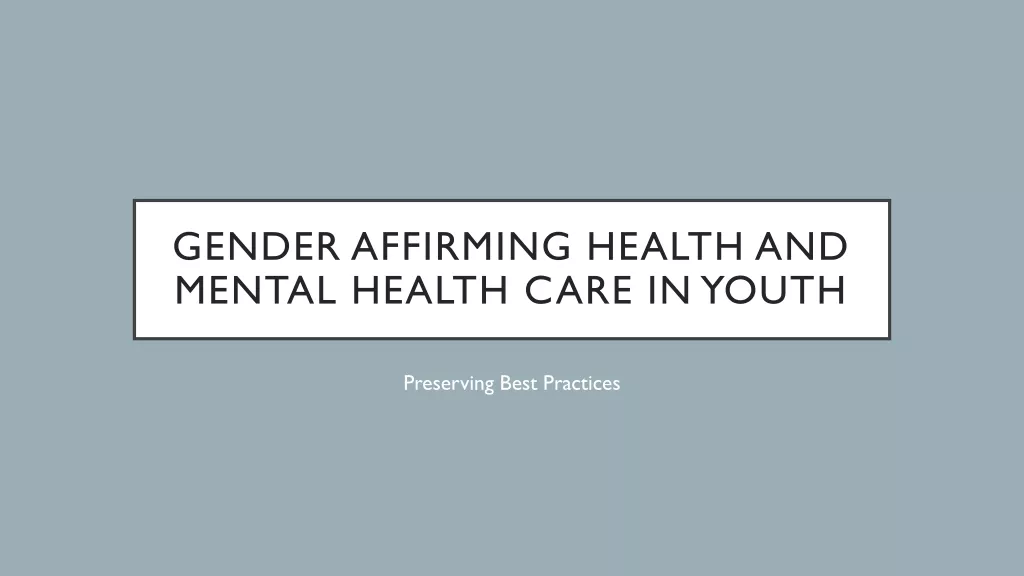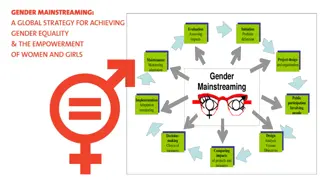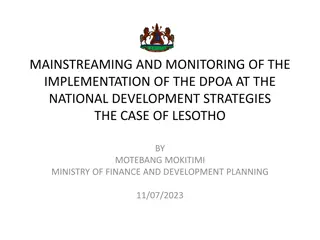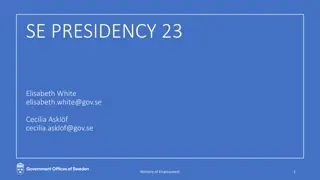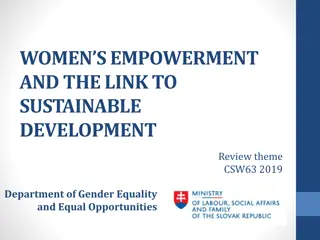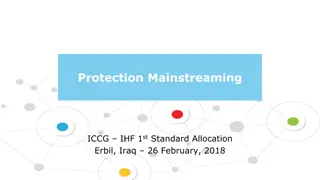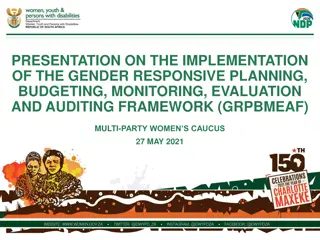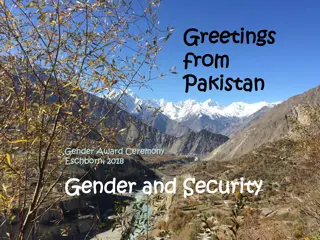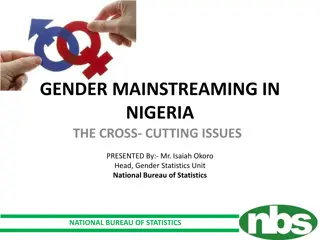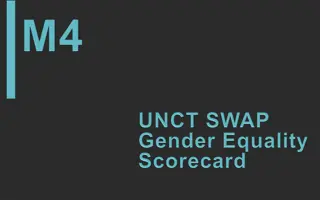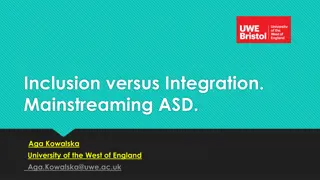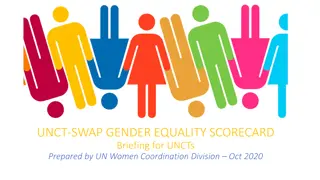Understanding Gender Mainstreaming in Development: Resources and Control
Explore the significance of access and control over resources in building resilience, and how varying status levels impact resource access. Learn about different types of resources, benefits, and the gender dimension of access and control. Delve into a gender analysis to understand the distribution of resource usage and decision-making between men and women.
Download Presentation

Please find below an Image/Link to download the presentation.
The content on the website is provided AS IS for your information and personal use only. It may not be sold, licensed, or shared on other websites without obtaining consent from the author. Download presentation by click this link. If you encounter any issues during the download, it is possible that the publisher has removed the file from their server.
E N D
Presentation Transcript
Mainstreaming Gender in Development: The Pacific Way Pacific Gender Mainstreaming Training Kit Module 2 Session 4: Access to, and control over, resources
Learning outcomes Learning outcomes At the end of this session you will understand: how access and control over resources can impact on resilience.
Access and control Access and control Access refers to the opportunity to make use of something. Control refers to the ability to define how something is being used and impose that definition on others.
Types of resources Types of resources In the household In the community Land Tools and equipment Financial resources/savings Means of transportation Means of communication House and furniture Everything people use for their livelihoods and in their daily lives. Common land Forests Market places NGOs Healthcare centres Schools and everything that is used, managed or owned by the community.
Types of benefits Types of benefits In the household In the community Healthy family members Education of the children Savings Security A house Enough food Good family relationships General wellbeing and happiness of the family. Peaceful relationships Community rights respected Well-preserved natural resources Economic development A clean environment Safety General wellbeing of the community.
The gender dimension of a The gender dimension of access and control ccess and control The degree of access and control over resources depends to a large extent on the status of the individual: The higher the status in the family, the community, and the society is, the higher the access to and control over resources. The lower the status, the more limited the access and control over resources will be.
A gender analysis of access and control A gender analysis of access and control Resources Access Who uses it? Control Who decides for it? Men XXXX XXX XXX XXX XXX XXX XX XXX XXX Men XXX XXX XX XXX XX XXX X XXX XXX Women XXX X XXX XX XX XX XXX X XXX Women XX X XX X X XX X X XX Land Vehicle House Incomes Television Mobile phone Information on Time/availability Friends or family members
Resources required for resilience to disasters Access Who uses it? Control Who decides for it? Men Women Men Women Financial resources XXX X XXX X Diverse sources of income X X XX X Information on safety measures XX XX XXX X Water tank XX XX XX XX A safe place to stay XXX X XXX X Radio XX XX XXX X Phone XX XX XX XX Family or friends who can help XX XX XX XX
Why this information is important Why this information is important What do people need to be productive? To be financially secure? To be safe? To be resilient? To be healthy? People who can easily access those resources are more likely to be safe, resilient, and financially secure. People who have no control over those resources depend on others more, have less capacity to respond to crisis, and are more vulnerable to hardship and violence.
Why this information is important Why this information is important Analysing access and control over resources informs us about gender inequalities In most cases where women have less access to and limited control over productive resources, they are less financially secure, and less safe, which makes them more vulnerable to poverty and violence. The level of access to and control over resources depends on people s status. The higher the status in the family, community and society, the greater the access to and control over resources will be.
Evaluation questions Evaluation questions 1. Explain the differences between accessing resources and controlling resources. 2. Explain what difference it makes if someone controls a resource instead of just accessing it.
Evaluation questions Evaluation questions 1. What is the difference between accessing resources and controlling resources? a)When someone accesses something, she or he controls it automatically. b)Accessing a resource gives benefits, and controlling those resources means that a person can do as they wish with those resources. c) If a person is the primary user of a resource, she or he is obviously the one controlling this resource. d) Accessing a resource means making use of this resource while controlling a resource means deciding on who can use the resource and how.
Evaluation questions Evaluation questions 2. What difference does it make if someone controls a resource instead of just accessing it? a)It secures the right the person has of using this resource and its benefits. b)It does not make any difference. c) It empowers the person. d)The resource cannot be taken away.


